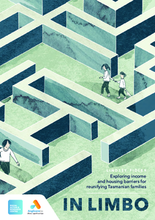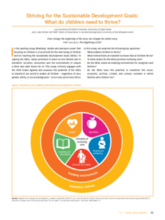Displaying 251 - 260 of 505
In this review, the authors briefly outline who is most at risk for experiencing parental incarceration, before providing an overview of recent multidisciplinary research on the impacts of parental incarceration for American children, ages 0–17.
This article, based on a unique mixed‐methods study of social work interventions in the UK and the influence of poverty, highlights a narrative from practitioners that argues that, as many poor families do not harm their children, it is stigmatizing to discuss a link between poverty and child abuse and neglect.
The objective of this article is to analyze the phenomenon of social risk families and its trends in Lithuania.
This report looks at the nature and extent of the income and housing challenges faced by Tasmanian families who have had children removed by Child Safety Services, and the impacts those challenges may have on positive family reunification outcomes.
This report details a component of the UNSW national Long-term Outcomes of Forgotten Australians Study reported in No child should grow up like this which explored the in-care and after-care experiences of adults who spent their childhoods in institutions and foster care during the period 1930 to 1989. In this report, the focus is on Stolen Generations survivors and other Aboriginal and Torres Strait Islander individuals who participated in the research.
The purpose of this study is to understand the prevalence of economic hardship in the child welfare system and explain the economic disparity gap.
This study assessed child poverty, deprivation and social service delivery in refugee and host communities in selected districts in the country’s three major refugee-hosting areas: West Nile, a sub-region of Northern region that borders South Sudan; the country’s South West, which borders the DRC and Rwanda; and the capital, Kampala.
As part of its mandate the National Gender and Equality Commission (NGEC) undertook a study whose primary objective is to identify minorities and marginalized communities of Kenya, and outline major issues affecting these communities in all counties.
This study examined the relationship “Class-Based Visibility Bias” (CBVB) using statewide individual-level data in four states (Idaho, Michigan, Missouri, and New Hampshire) and nationwide county-level data.
This essay critically engages with the 2030 Global Agenda and assesses the potential of the SDGs to transform our world to enable all children – regardless of race, gender, ability, or social background – to not only survive but thrive.







